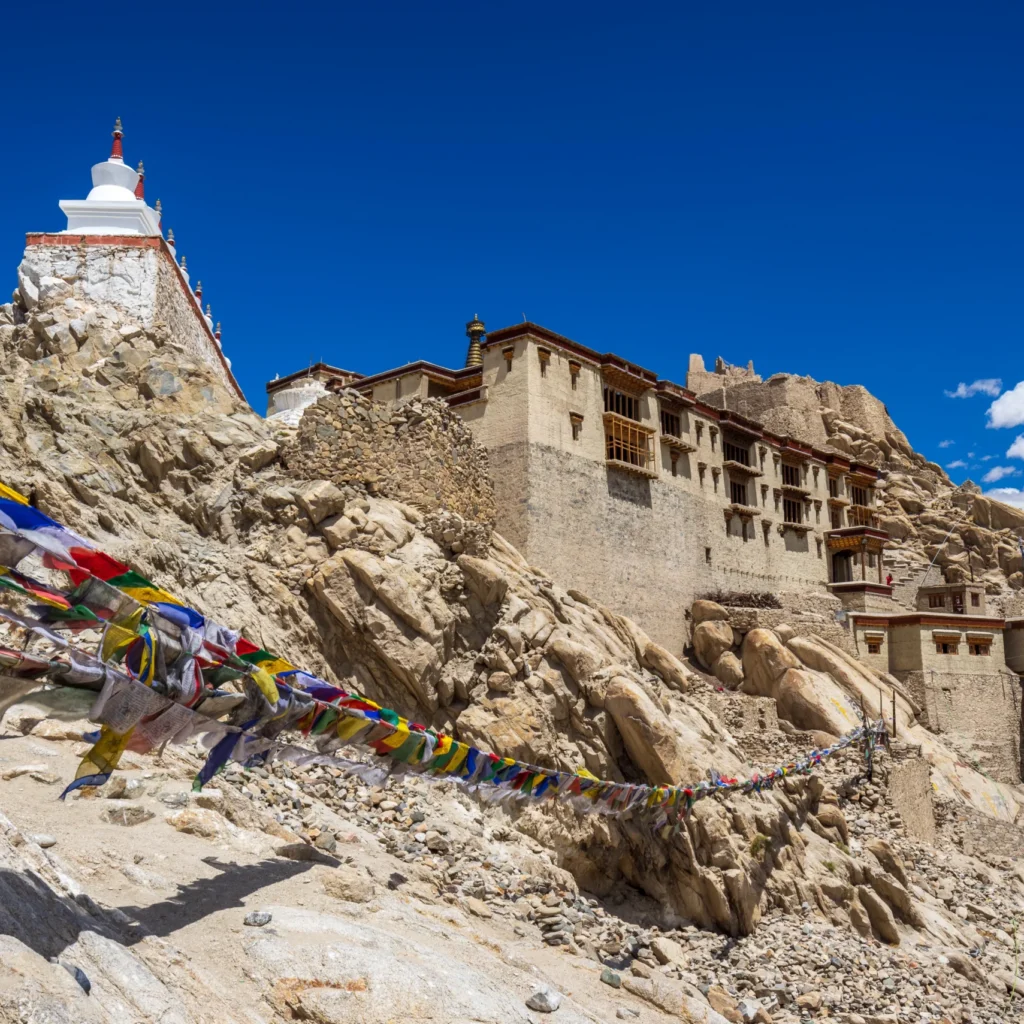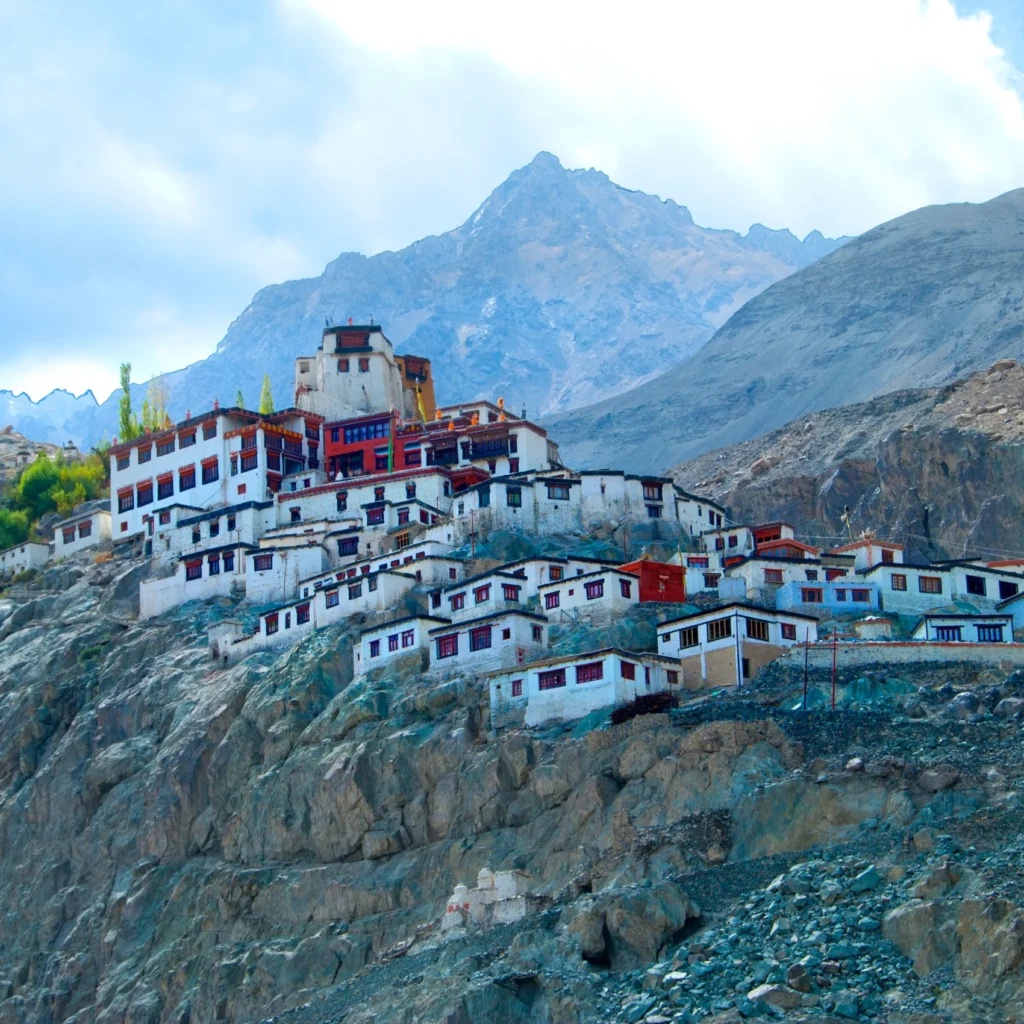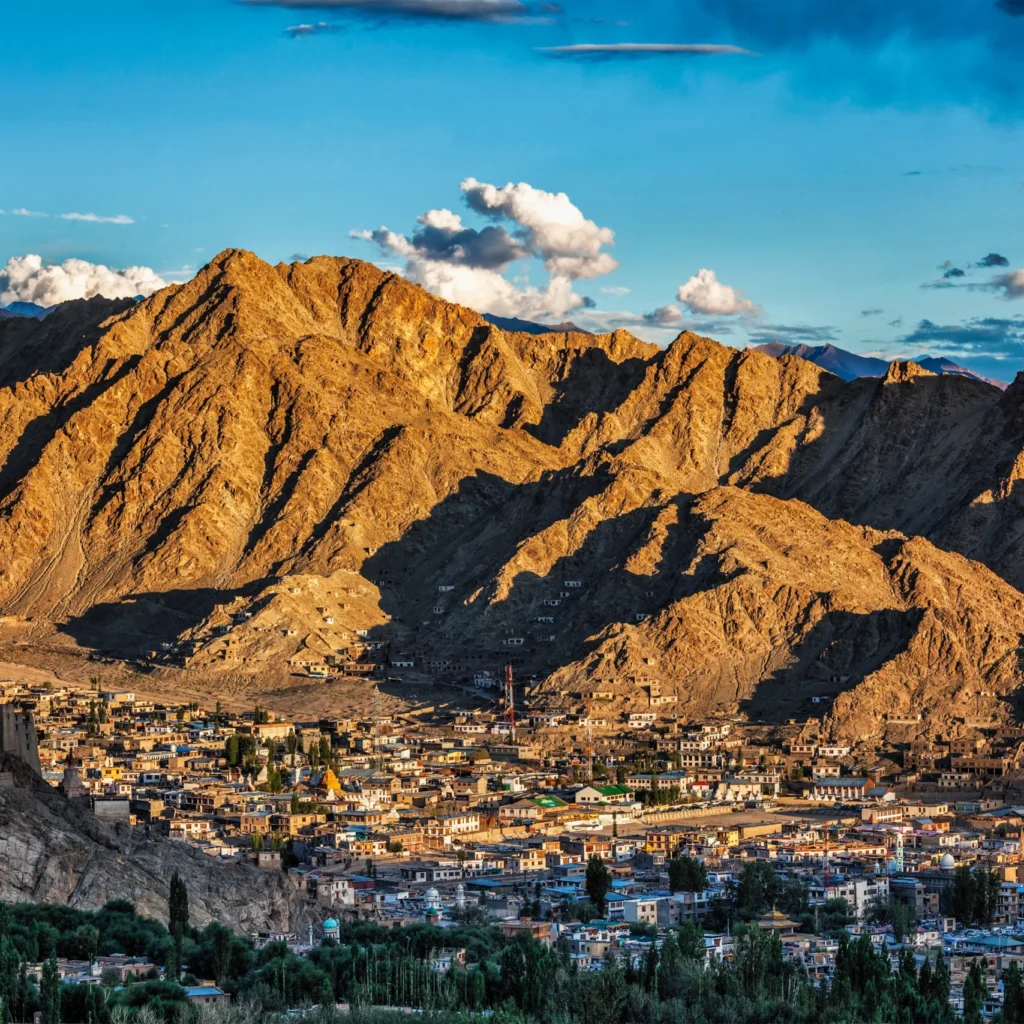LEH



5N/6D
Tour Itinerary
Day 1 Delhi - Leh
Arrive Leh airport. Our representative will transfer the guests to their hotel in Leh.
Leh, situated at an altitude of 3,524 m or 11,562 ft. is the joint capital and largest city of Ladakh, a union territory of India. Leh was also the historical capital of the Kingdom of Ladakh and for centuries an important stopover on trade routes along the Indus Valley between Tibet, Kashmir, India and China. In the evening if your health permits, you may take a walk through Leh town. Dinner and overnight stay at the hotel in Leh.
Day 2 Leh
If you are an early riser, there is a beautiful opportunity to visit Thiksey monastery for Morning Prayer session of the resident monks. You’ll have to start from the hotel by 06 AM with packed breakfast to reach Thiksey (17 kms/20 Min) on time for the morning prayers. Later enjoy your packed breakfast with a hot tea or coffee at the monastery café.
Post breakfast Drive to Hemis monastery to visit one of the most famous monasteries of Ladakh. Later drive to Stok Village and visit Stok Palace & Museum. Lunch will be with a local family. Enjoy the local cuisine which is very hard to find these days in Leh. After enjoying your time with the family visit their 300-year-old house which is now converted to a private museum. Later drive back to Leh (12 Kms) on the way visit Shey Palace and the small gompa it houses. Reach Leh for dinner and overnight stay.
Day 3 Leh - Uletokpo
After breakfast drive to Uletokpo (85 Kms / 03 hrs) Enroute visiting Spituk Monastery, Magnetic Hill, and Likir monastery, which houses one of the biggest open air statue of Maitriya Buddha. Continue drive to Uletokpo, with a stopover visit to 1000 year old Alchi monastery. Arrive Uletokpo around lunch time. Post lunch hike to Mangyu Village (02 Hrs one way). Arrive Mangyu village and visit a local household for evening tea and snacks. Spend the evening with the family interacting about their livelihood and the way of life. Dinner and overnight stay at Uletokpo.
Day 4 Uletokpo - Lamayauru - Leh
After breakfast drive to Lamayuru monastery (40 Kms / 01 hr.) after visiting the monastery drive back to Leh (120 Kms / 03 hrs) On the way back visit a local Amchi, practitioner of a traditional medicine system in Ladakh. Amchi medicine system is based on Tibetan ayurvedic medicine and uses mainly plant sources.
Reach Leh in the evening and relax at the hotel. Dinner and overnight stay at Leh.
Day 5 Leh – Pashmina Trail and A walk through History
Post breakfast leave for a visit to Pashmina Factory in Choglamsar village. It is a matter of great pride that Pashmina, one of the finest fabrics of the world, originates from the Changthang region of Eastern Ladakh. Later drive to Leh for a heritage walk of Old Leh Town. According to legends, Lama Stagtsang Raspa, who is the founder of the Hemis gompa, planted the tree. The Sikh community of Leh is currently maintaining the tree which is now famous as Datun Sahib or the “toothbrush of Sikh teacher Guru Nanak”.
The walk through the narrow alleys is both awe-inspiring and beautiful as you pass through centuriesold heritage buildings, mosque and gompas. The old town area is also famous for Jama Masjid, the mosque that is built at the entrance of Maney Khang, the main gateway into the Leh old town. The heritage walk ends at the Jama Masjid in the main market.
Enjoy lunch with local delicacies at Tibetan Kitchen restaurant at Fort Road in Leh market area.
Post lunch visit Leh market to avail your last chance to buy souvenir for your loved ones back home.
The Leh Main Market is one of the most attractive and energetic places in Ladakh. You can get everything from jewellery to clothes, groceries, to local street food. Whether you are looking for artistically hand-crafted Pashmina shawls, delicious dried fruits, or simply looking forward to getting a glimpse of the lives of the local Ladakhi people, the Leh Market has a lot to fulfil all your expectations.
Day 6 Departure
Transfer to Leh airport for flight to Delhi.


